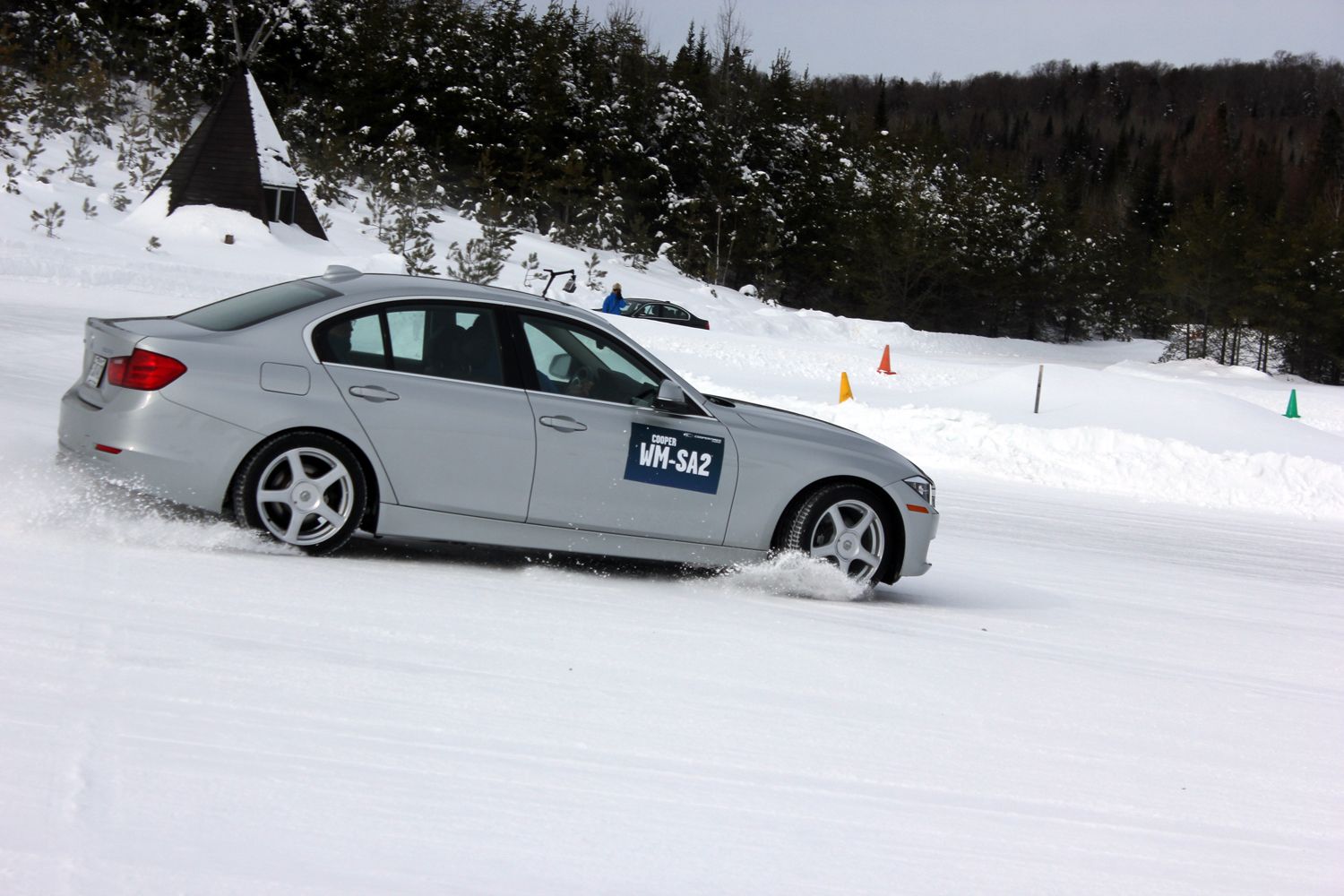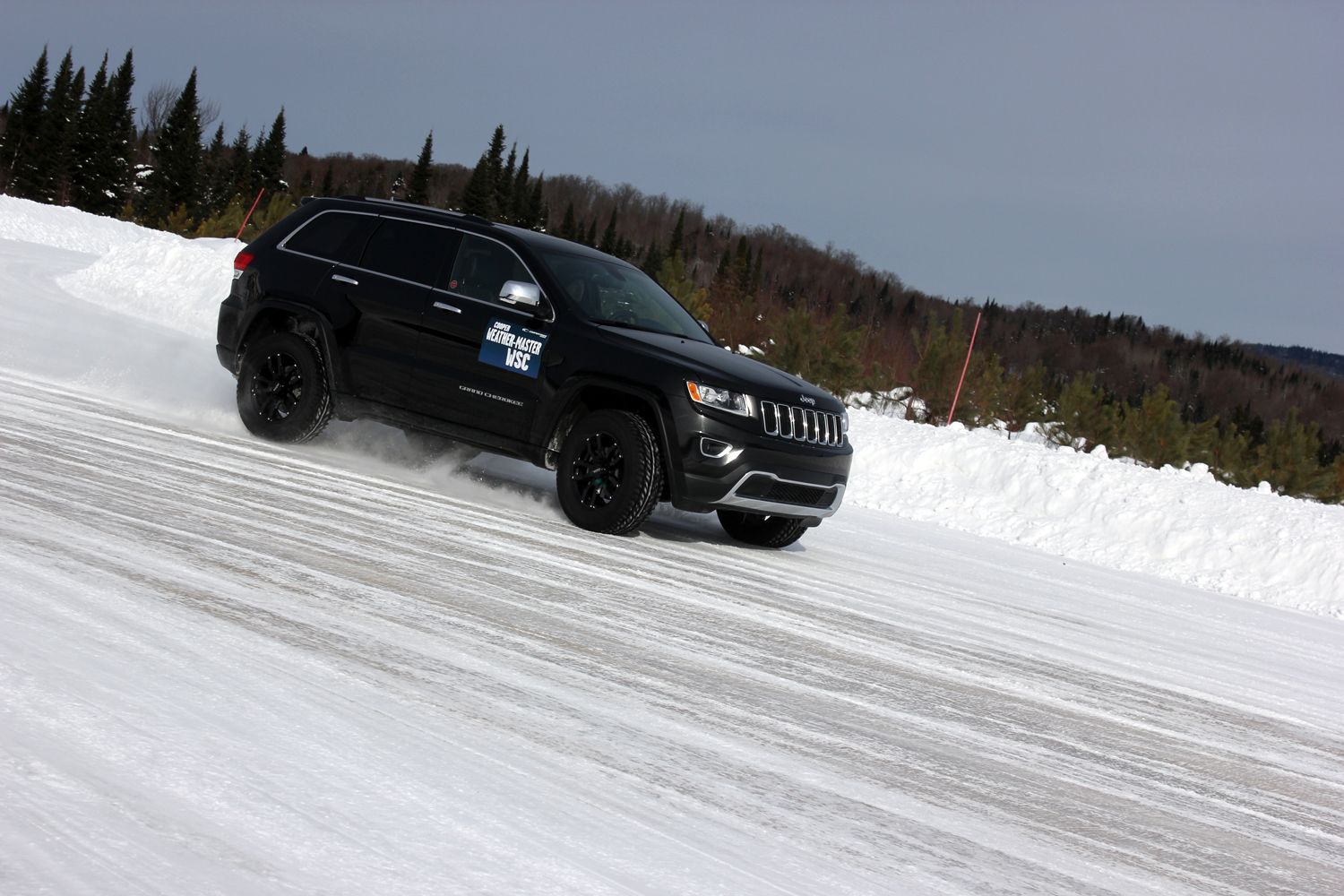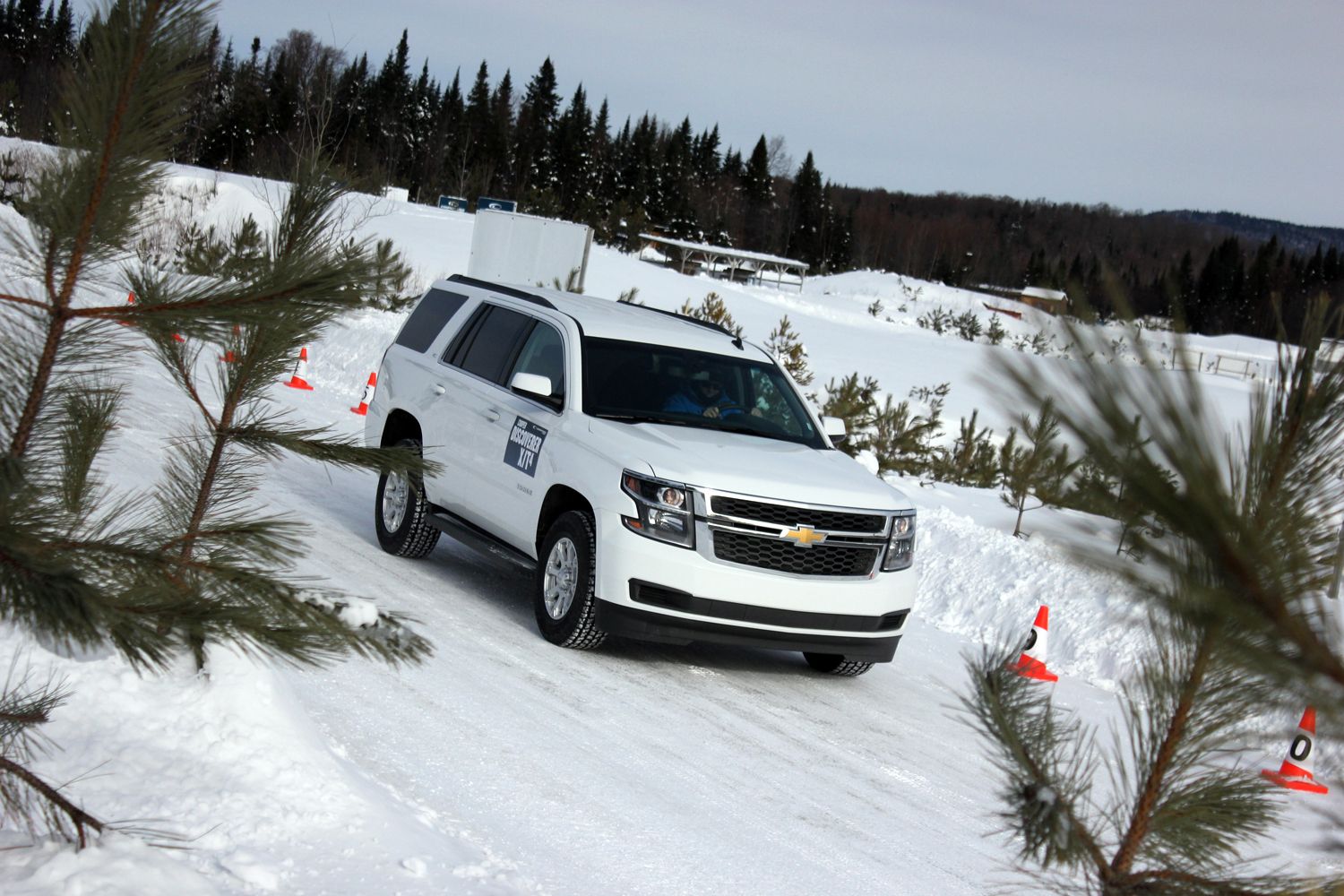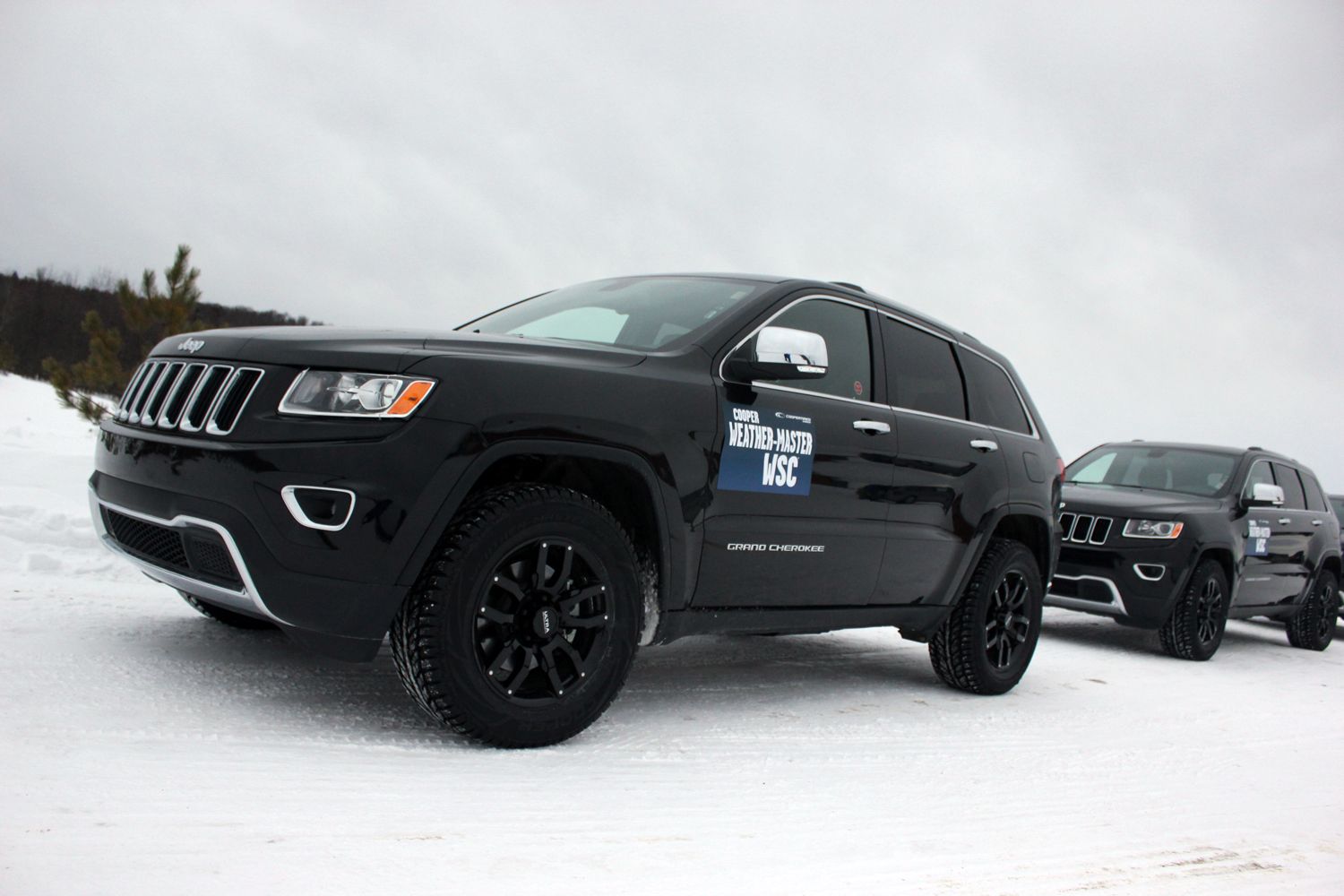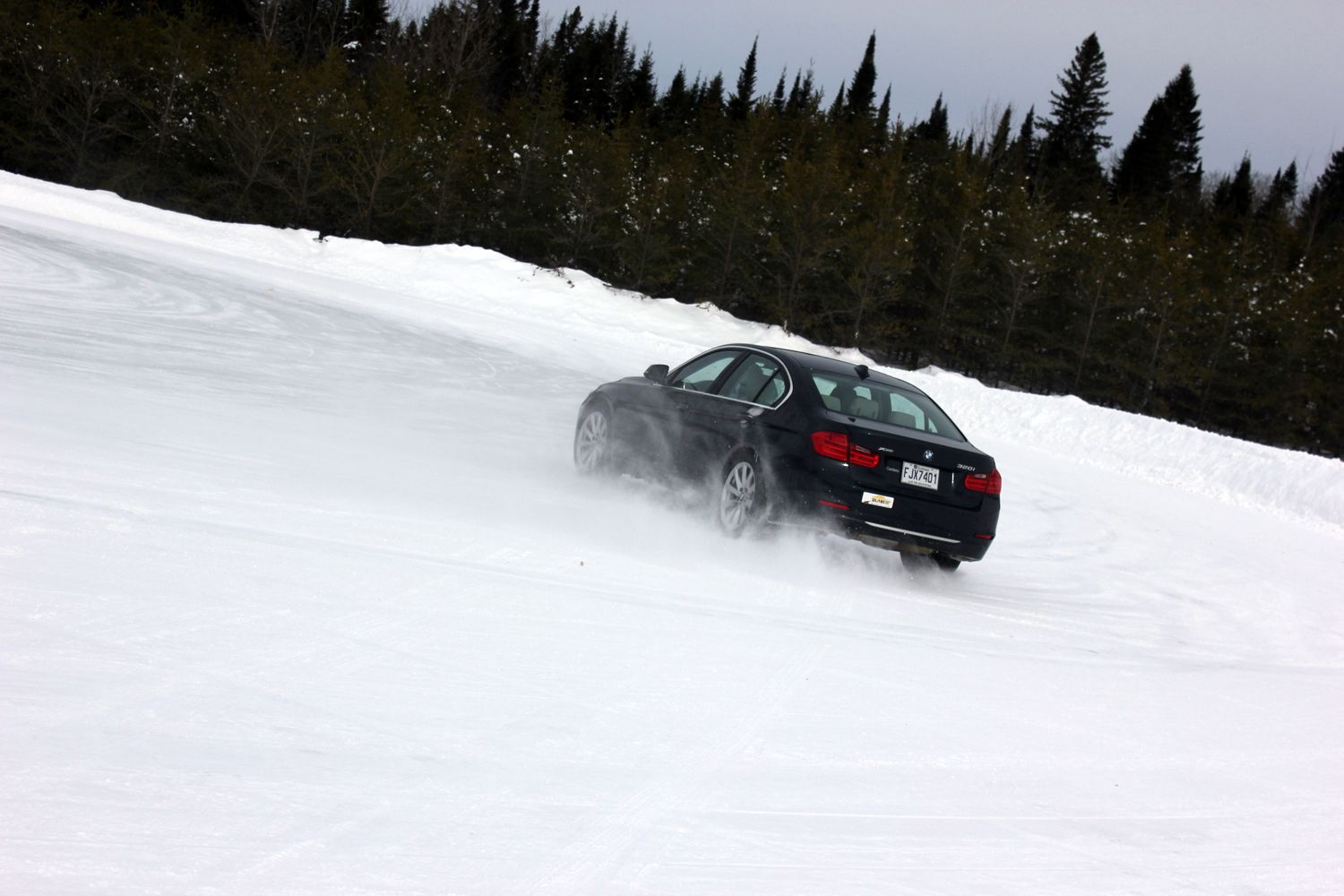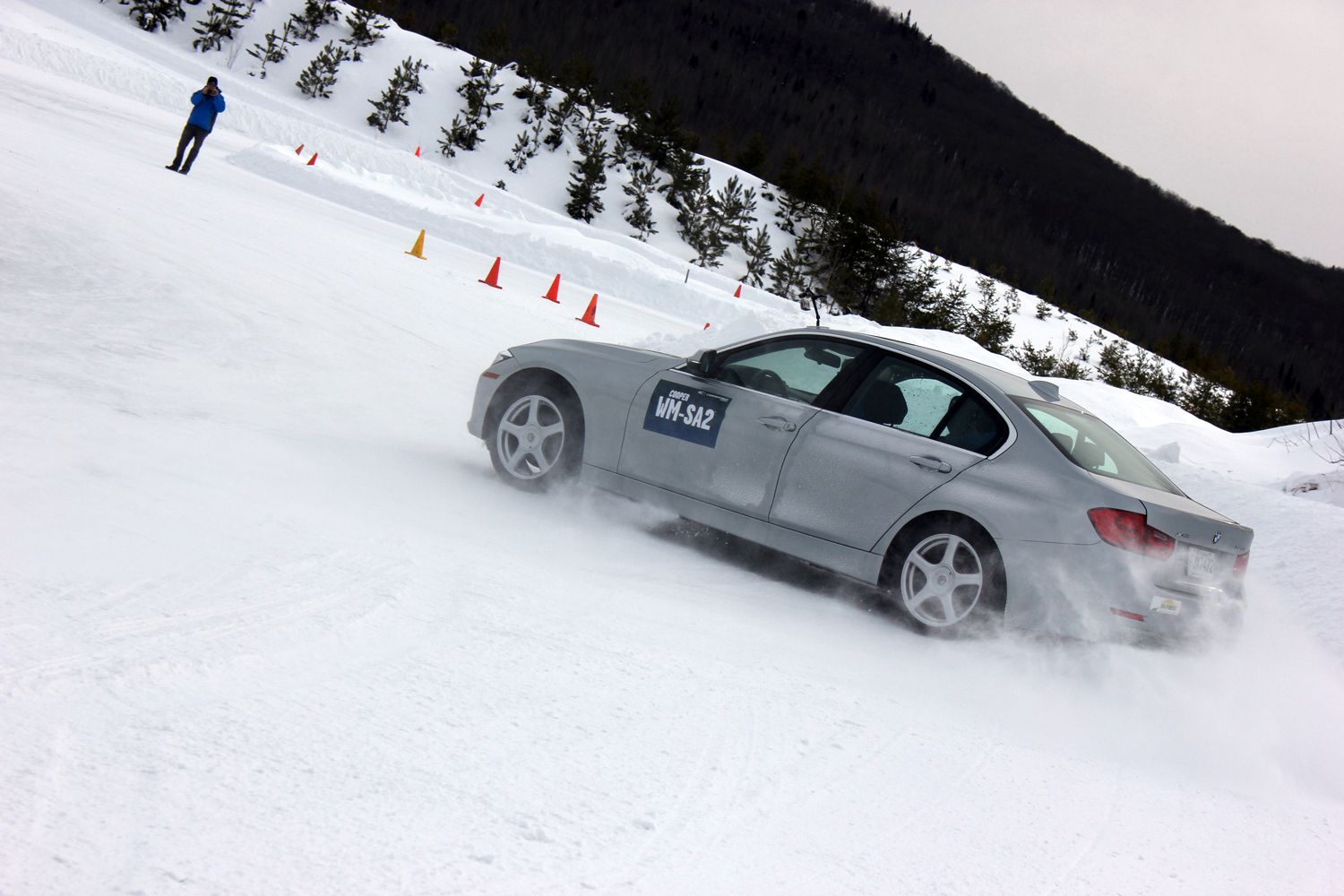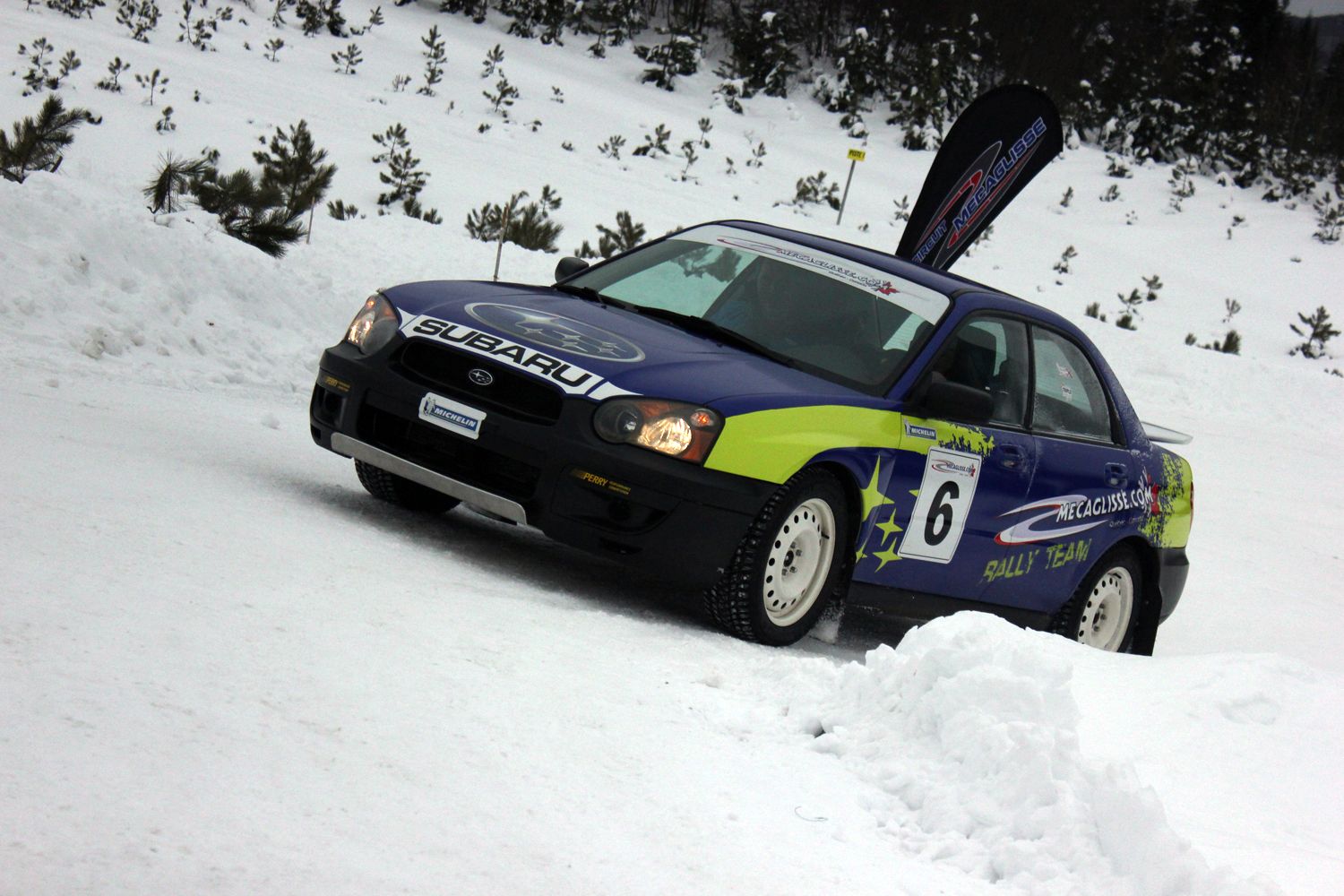I am testing a set of winter tires from Cooper Tire to see how much benefit a driver in the snow belt will receive, and so far I have learned a lot. With lots of ice, slush and just plain freezing temps on clear roads, I have discovered why winter tires are a smart purchase. That said, I really can’t give a full review of these tires unless I get a chance to test them in real heavy winter conditions. As it happens, Cooper was holding a winter-tire testing event in Canada, and our tires were on the list of included products.
I asked if I could follow the team up to Canada to give the tires a good flogging on ice and snow, and they were more than happy to oblige. As a bonus I got a chance to test out a new all-season tire that is supposed to be nearly as good as winter rubber in the snow, I was able to test a more performance-oriented SUV->ke145 winter tire, and I even learned how to drift a BMW->ke178 on ice. If you remember the mayhem that happened the last time I got to be a tire tester, well, it happened again. This time we killed a Jeep->ke40 though, not a Corvette.->ke1280
Continue reading to find out more about the Cooper Tire Winter Tire Testing Program
I knew before I even arrived that this event was going to a little special and a little exciting. For starters, this wasn’t a traditional media experience; this was a tire dealer event. That meant a lot of driving scenarios were created to help a dealer sell a tire, not to help a journalist make a competitive comparison. Second, it was the first winter event Cooper has ever held, so I had to take into account their learning curve in hosting such an event.
The reasoning behind the event is simple. In Quebec, the law states that all cars be equipped with a snow-rated tire from December 15 to March 15, so winter tire sales are strong every year. Cooper decided that the best way to help inform its independent dealers what the strengths of its products are is to put them all in cars with the new tires and send them careening around a frozen race track. I was one of only five journalists on this event of more than two dozen people. I felt a bit out of place to say the least.
What followed was a day of slides, laughs, clenched sphincters and even a minor crash or two. Oh, and lots of spins.
To make sure that everyone was able to test each tire to its full potential without the risk of causing serious injury to the public at large, Cooper rented a local training facility called Circuit Mecaglisse to let us frolic in the snow. Mecaglisse is a full advanced training complex outside of Montreal, and features a collection of tracks and surfaces for training race, motorcycle and rally driving. In the winter, the snow and ice is used to change the various tracks into winter driving courses.
Our day would consist of testing in three different cars on three different kinds of tires. The first stop of my day was a simple iced handling course with a slalom, an accident avoidance exercise, hill stop, emergency lock up, and a few nice wide sweepers connecting the various stations. We were given Chevrolet Tahoes as our weapon of choice and the goal was to test a new all-season tire that Cooper promised would provide capabilities very similar to a dedicated snow tire in the winter, while maintaining the drivability and longevity of a normal all-season during the summer. Depending on your market, this tire will wear the name Discoverer A/TW or Discoverer X/T4.
To prove how good this tire could be against a dedicated piece of winter rubber, Cooper brought another Tahoe with a set of Firestone Winterforce UV tires on all four corners. During my multiple course runs I came to the conclusion that while the A/TW couldn’t keep up with the Winterforce in every test, it came damned close. Considering this is an all-season tire good for even summer months, I was astonished at how well it handled the snow and ice. It easily had 85 percent of the capability of the dedicated winter tires. Though I still would stick to a dedicated winter tire and just swap over in the spring, I can see the appeal of not needing to change tires with the seasons.
After the jaunt with the Tahoes, we moved over to set a Jeep Grand Cherokees wearing the Cooper Weather-Master WSC. The WSC is a very aggressive performance winter tire that is designed for SUVs and light trucks. It features a directional design and can be studded. If the Discoverer A/TW is designed to be a good four-season tire, the WSC was created to completely decimate winter terrain. While Cooper didn’t provide a competitor tire for this test, they did set us up with a difficult handling course, and a high-speed (well, relatively high speed) oval. We started with the oval that had been lovingly named “the peanut,” for some practice and sideways action. This course is mostly ice with some packed snow scattered about, and it gave the new tires a solid workout. With the back turn dropping drastically in what seemed to be at least a 6 degree grade before immediately arcing back uphill into the last turn, this was a course that could quickly make you end up facing the wrong direction.
After a few near-spins, we moved over to the handling course. This tight and twisty loop features plenty of ice, loose snow, high snow banks and even a 180-degree hairpin. This was the trickiest part of the day, with many of my colleagues ending up backwards or in the snow bank. While it wasn’t from our group, one person managed to plow into the snow bank so hard around the hairpin that he left a perfect imprint of the Grand Cherokee’s nose in the snow. I held my honor as a driver and never ended up in the bank or pointing the wrong way round, but there were a few sketchy moments to be certain.
Finally after all the playing around in the SUVs, we got to the real reason I was on this trip. I was getting to test the WM-SA2 tires, the same tires I have on my Golf. Our cars for this part of the day were a pair of BMW 320i xDrive sedans. One car was wearing the Cooper rubber, the other was wearing a set of Continental ContiWinterContact TS 830 tires. Both tires are performance winter tires with directional tread patterns, and it would take a suitably difficult test to figure out which was better; so we took them ice drifting.
We drove both cars down to a large iced skidpad, and we were given rudimentary training on how to induce and hold a slide. The idea of the test is that the better tire will allow for greater control even when traction is lost. Basically, we were truly testing what these slabs of rubber can do when things go wrong. While far from scientific, it was easy to see that the Cooper-equipped car was easier to drift, while the Conti car was much easier to spin. Both cars spun a lot, but by my count, the Cooper only ended up backward half as often. From the driver’s seat it was much easier to get the Cooper sideways thanks to a front end that liked to grip a lot more, and the car was much quicker to snap back in line once I jumped off the throttle. It was a surprisingly effective tire despite driving around what was essentially a sheet of rough ice.
At the end of the day I had a newfound respect for the tires I had on my personal car back home. They had treated me well through the various levels of foul weather I had experienced, but I had been concerned about how they would react if we ever got a solid snowstorm here in East Tennessee. Now I can say with certainty that the Cooper WM-SA2 are solid winter tires even when they start to measure the white stuff in feet and not inches.
After the day was over, we got a chance to have a just a bit of extra fun as the course instructors fired up the student rally cars, a group of older Subaru Impreza 2.5 RS modified with roll cages, skid plates and studded tires. We didn’t get to drive unfortunately, but we did get to take a nice ride through a separate rally course that ran through the woods, and the trip came with full-on driver commentary about throttle control turning techniques and racing line fundamentals. It didn’t have much to do with tires, but it sure was one hell of a good time.
When I first arrived in Canada, it was difficult to discern how I was supposed to evaluate a tire at what was ostensibly an event for dealers, but thanks to a varied level of surfaces and courses at Circuit Mecaglisse, coupled to Cooper’s willingness to give us good competitor tires to test against, I feel confident that I made fair comparisons. I guess when you are making tires as good as Cooper is currently making them, you aren’t afraid of being shown up by a competitor. I am excited about the prospect that there can actually be an all-season tire that performs well in the winter, I love the fact that there are performance winter tires for SUVs and light trucks, and of course there are few things as satisfying as ice drifting. I learned a lot of new driving skills, I gained some new respect for Cooper Tire as a company, and I got a chance to really push the limit on the tires I am testing long-term. Altogether it was a far more productive trip than I had hoped.
I'm just glad I am not the guy that crashed the car.

